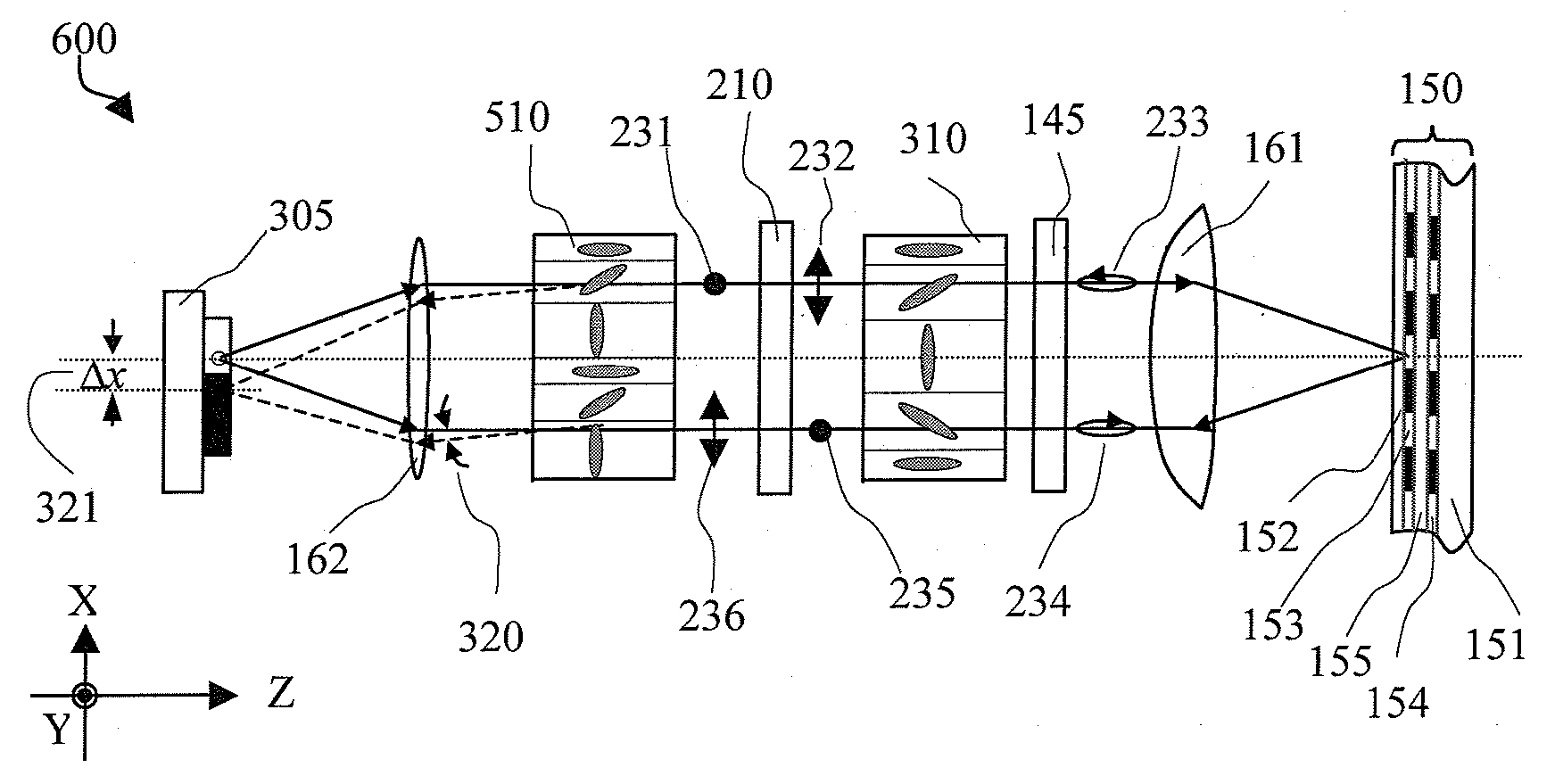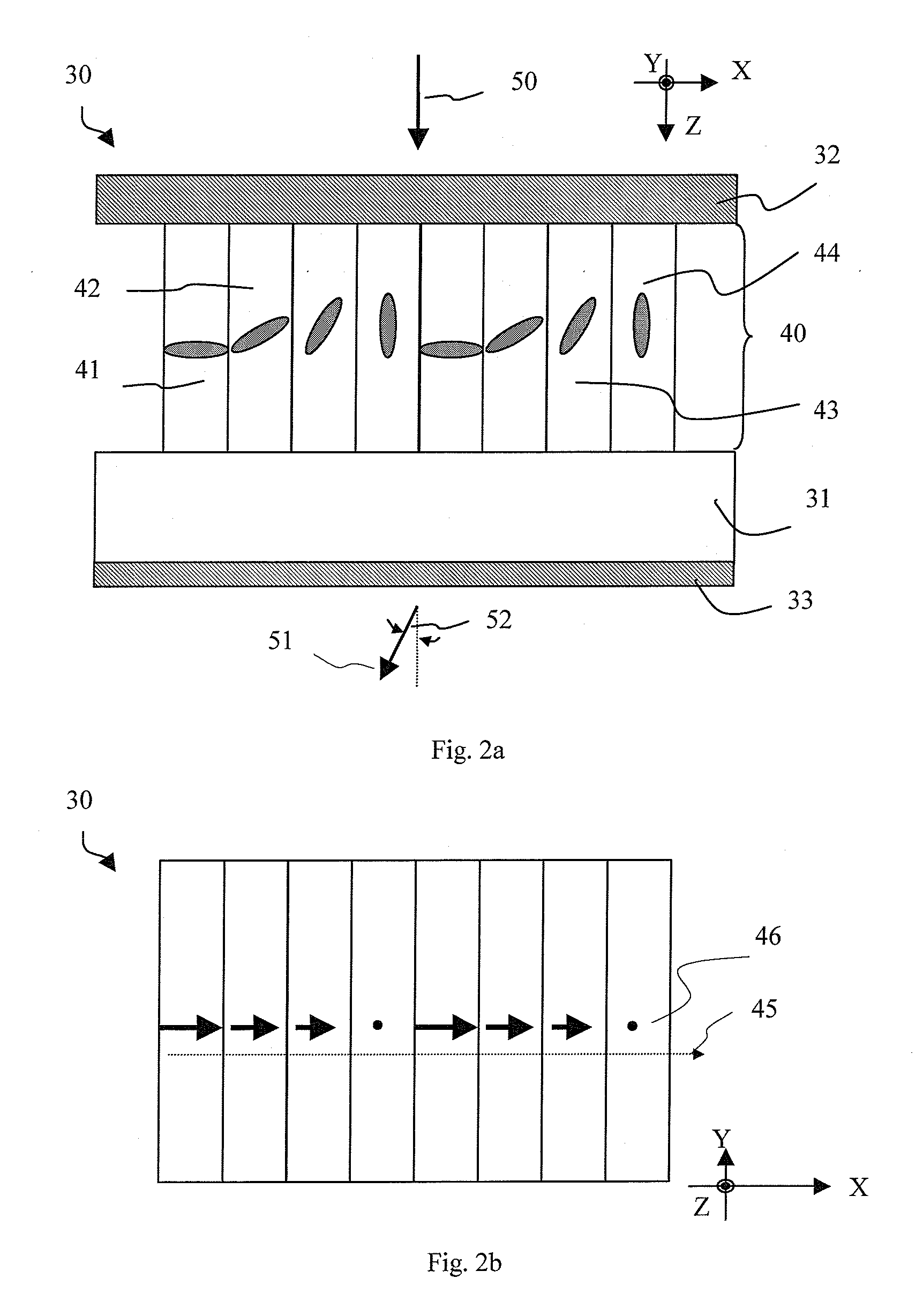Non-Etched Flat Polarization-Selective Diffractive Optical Elements
a diffractive optical element and flat polarization technology, applied in the field of diffractive optical elements, can solve the problems of low cost, inconvenient use, and inability to meet the needs of many applications, and achieve the effect of low cost and easy formation with precision
- Summary
- Abstract
- Description
- Claims
- Application Information
AI Technical Summary
Benefits of technology
Problems solved by technology
Method used
Image
Examples
Embodiment Construction
[0063]A prior-art thin liquid crystal (LC) hologram structure is illustrated in FIG. 1, which is a thickness cross-sectional view along the grating vector. The grating vector is the plane where the light is dispersed by diffraction effect. It is also the pixelation direction for a 1D grating or hologram. The hologram 5 includes a substrate 1, onto which an array of pixels 10 having varying azimuthal LC director orientations is disposed. Four discrete azimuthal LC director orientations are shown as 11, 12, 13 and 14. More specifically, the projection of the LC index indicatrix onto the plane of drawing (XZ-plane) is shown. Pixel 11 has its projected director aligned parallel to the X-axis, whereas pixel 13 has its projected director aligned parallel to the Y-axis. The other two states, pixels 12 and 14 have their projected directors contained within the XY plane but non-parallel to both the X- and Y-axes. The hologram element 5 also includes AR coating stacks 2 and 3 to aid transmiss...
PUM
| Property | Measurement | Unit |
|---|---|---|
| deflection angle | aaaaa | aaaaa |
| tilt-angles | aaaaa | aaaaa |
| out-of- | aaaaa | aaaaa |
Abstract
Description
Claims
Application Information
 Login to View More
Login to View More - R&D
- Intellectual Property
- Life Sciences
- Materials
- Tech Scout
- Unparalleled Data Quality
- Higher Quality Content
- 60% Fewer Hallucinations
Browse by: Latest US Patents, China's latest patents, Technical Efficacy Thesaurus, Application Domain, Technology Topic, Popular Technical Reports.
© 2025 PatSnap. All rights reserved.Legal|Privacy policy|Modern Slavery Act Transparency Statement|Sitemap|About US| Contact US: help@patsnap.com



